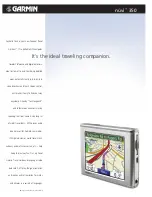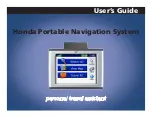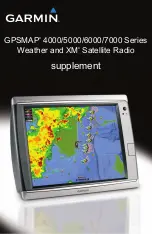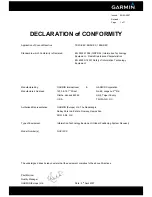
2
Whether your AirMap 500 is the only GPS in the cockpit or backing up
an in-panel display, you're using the most versatile and most affordable
hand-held GPS receiver in the aviation market today.
Our goal for this book is to get you in the air (or out on the road) fast,
with a minimum of fuss. Like you, we'd rather spend more time flying,
and less time reading the manual!
So, we designed our book so that you
don't
have to read the
whole thing
from front to back for the information you want. At the start (or end) of
each segment, we'll tell you what content is coming up next. If it's a
concept you're already familiar with, we'll show you how and where to
skip ahead for the next important topic.
You may be the button-pushing type who just likes to play with the
GPS first, before peeking inside the manual. That’s fine, because Air-
Map menus have a pop-up Help feature that will answer many of your
questions. If this is your learning style, turn to the installation instruc-
tions in Section 2, then step outdoors with your unit. When you come to
a menu command you want to learn more about, jut turn to the Table of
Contents or the Index and look it up.
The manual is organized into six sections. If you’re new to GPS, prefer
a tutorial approach to learning or just want to explore more of the awe-
some features in your AirMap, we suggest you skim some of these sec-
tions more closely.
This first section is an introduction to AirMap, GPS and WAAS. It tells
you the basics you need to know before you can make AirMap look
around and tell you where you are.
Section 2,
Installation
, will help you get the batteries and MultiMedia
Card (MMC) correctly installed in your AirMap. (The card contains the
Jeppesen
Americas and Lowrance Obstructions aeronautical data-
bases.) We'll also show you how to install the RAM
mounting bracket
on a yoke and the RAA-3 remote active antenna in an aircraft window
or on top of the instrument panel.
Section 3 is really the heart of our book,
Aviation Mode Operation
. It
will introduce you to the
basic
airborne GPS functions. This section in-
cludes the one-page Aviation Mode Quick Reference we mentioned ear-
lier. The rest of Section 3 contains short, easy-to-scan lessons that fol-
low one another in chronological order. They're all you'll need to know
to get in the air quickly.
Aviation Mode instructions are only 28 pages long, and these lessons
will meet the navigation needs of many pilots. But, after you've learned
the basics (or if you already have some GPS experience), you may want
to try out some of AirMap's many advanced features. That brings us to
Summary of Contents for AirMap 500
Page 1: ...AirMap 500 Handheld Mapping GPS Receiver Operation Instructions...
Page 72: ...66 Notes...
Page 116: ...110 Notes...
Page 122: ...116 Notes...
Page 126: ...120 Notes...
Page 132: ...Visit our web site Copyright 2003 All Rights Reserved Printed in USA Lowrance Electronics Inc...








































